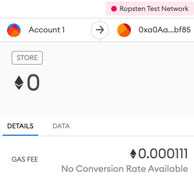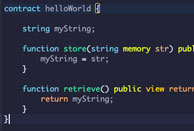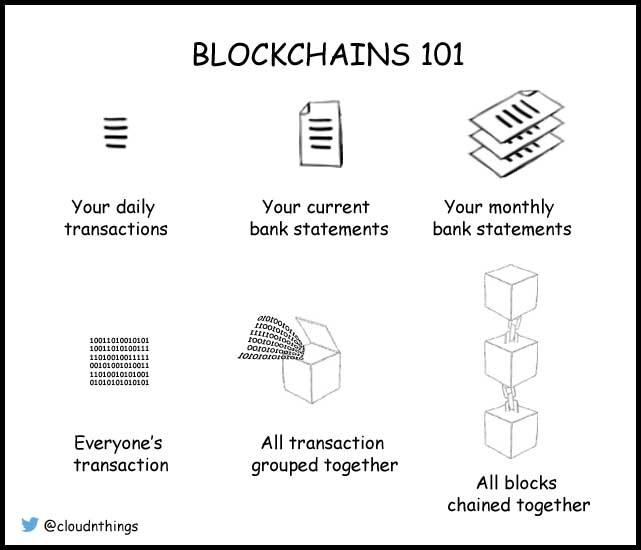
Ethereum is a platform that allows the creation of smart contracts. To understand how Ethereum works, it is important to appreciate the underlying concepts upon which it was built, that is Bitcoin and the blockchain.
When the first bitcoin transaction took place on the 3rd of January 2008, (known as the genesis block), it introduced to the world the concept of ‘decentralized consensus’. This is where everyone on the bitcoin network agrees that something has changed ownership, forming a ’crypto-currency ledger’.
The “bitcoin” blockchain is simply a collection of all transactions since bitcoins started, mathematically linked together to form a chain.
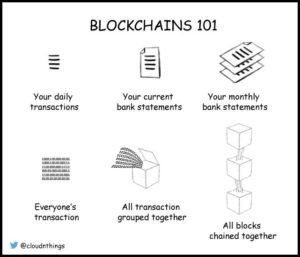
The blockchain also encapsulates some key concepts:
- Public Key Cryptography (the ability to verify and authenticate a message from a sender using a set of public and private keys that are mathematically linked.
- Cryptographic Hash Functions (a function which takes an arbitrary length input or ‘message’ and returns a fixed-size alphanumeric string, which is called the hash value – sometimes called a message digest, a digital fingerprint, a digest or a checksum)
- Peer to Peer Networking (computing or networking through a distributed application architecture that partitions tasks or work loads between peers. Peers are equally privileged participants in the application. Devices are connected and share resources without going through a separate server computer)
- Proof of Work (a mathematical process where obtaining the solution is random and difficult but the verification process is very straight forward)
Ethereum took the blockchain concept and said:
- Let’s use all the great properties of the blockchain but not limit its application just to currencies.
- Let’s also use bitcoin’s concept of multi-signature transactions (where two or more parties need to sign a transaction for the funds to be released to a third person) but expand on it’s capabilities.
- Let’s make it open and accessible to everyone.
Thus Ethereum was born.
Ethereum has been described as:
- “a decentralized platform that runs smart contracts: applications that run exactly as programmed without any possibility of downtime, censorship, fraud or third party interference.” – https://www.ethereum.org
- “the largest decentralized software platform that allows you to build smart contracts and distributed applications without any downtime and without any third party interference.” – https://www.quora.com/What-is-Ethereum-in-laymans-term
- “a next generation platform that allows anyone – both developers and consumers – to easily take advantage of decentralized networks and realize the benefits of blockchain technology” – http://decentral.ca/ethereum-infographic-homestead/
- “Whereas Bitcoin could be described simplistically as a “Global spreadsheet”, Ethereum could be described as a “Global spreadsheet with macros.”- https://www.quora.com/What-is-Ethereum-in-laymans-term
- “a new kind of law.” – http://etherscripter.com/what_is_ethereum.html
And from the creator himself, Vitalik Buterin:
- “In a nutshell, Ethereum is a new innovation in computing built from technologies and concepts originally pioneered in Bitcoin.” – https://coincenter.org/2016/03/what-is-ethereum/
What can Ethereum do?
Fundamentally, Ethereum (via the blockchain) is about the ability to link any piece of information to ownership and do so in a programmatical way. Some applications include:
- Proof of ownership for digital content (storage & delivery)
- Digital security trading (ownership & transfers)
- Digital asset trading
- Escrow/Custodian services
- Decentralized prediction platforms
The potential applications are endless.
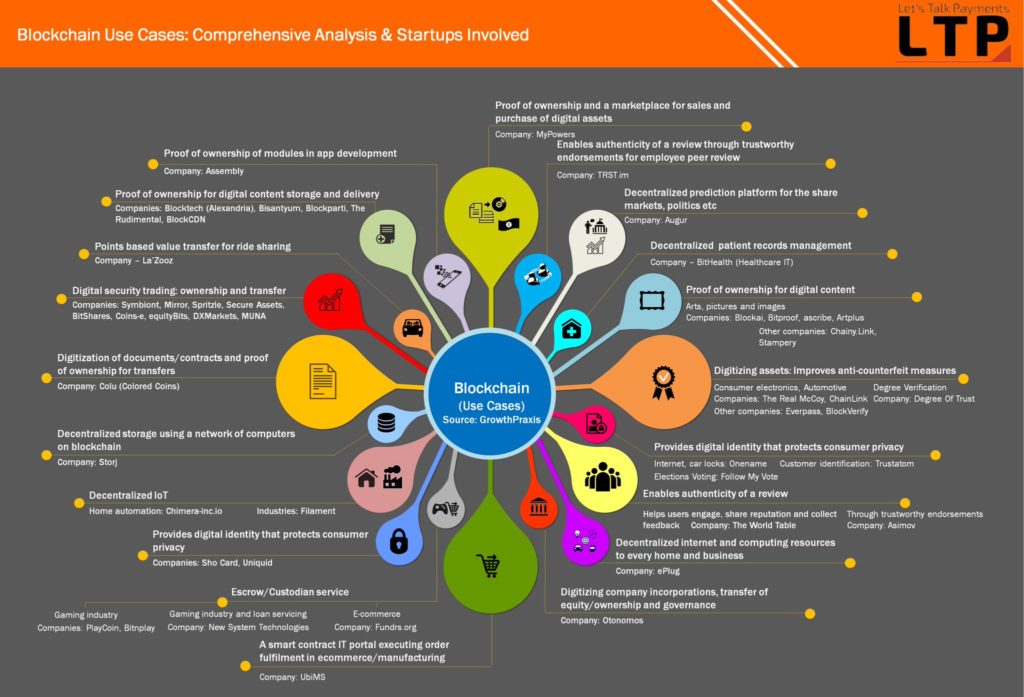
Source: https://letstalkpayments.com
Ethereum Terminology
- Smart contracts are written in a programming language called “Solidity”. A JavaScript type language.
- The smart contracts are then executed on the “Ethereum Virtual Machine” (EVM).
- Every node on the network runs an EVM.
- There is a cost to running smart contracts. Each line of code cost “Gas” to execute.
- “Ether” is synonymous to bitcoins. It’s the cryptocurrency used within the Ethereum network.
- Ether is used to buy Gas to power the smart contract code.
There are other concepts such as Externally Owned Accounts (EOAs) and Contract Accounts (CA) along with messages and transactions and these represent the inner workings of a smart contract.
However, as with bitcoin there are controversial teething problems. Some of the legal, ethical and operational problems are discussed here https://medium.com/@pullnews/understanding-the-dao-hack-for-journalists-2312dd43e993#.2ofyuqqfs
Summary
Ethereum is a platform that allows the creation of smart contracts. The smart contracts contain rules that are executed on the decentralized peer to peer Ethereum network and is powered via it’s own cryptocurrency called Ether. The potential applications are vast ranging from digital asset trading, escrow and custodian services and prediction engines.
